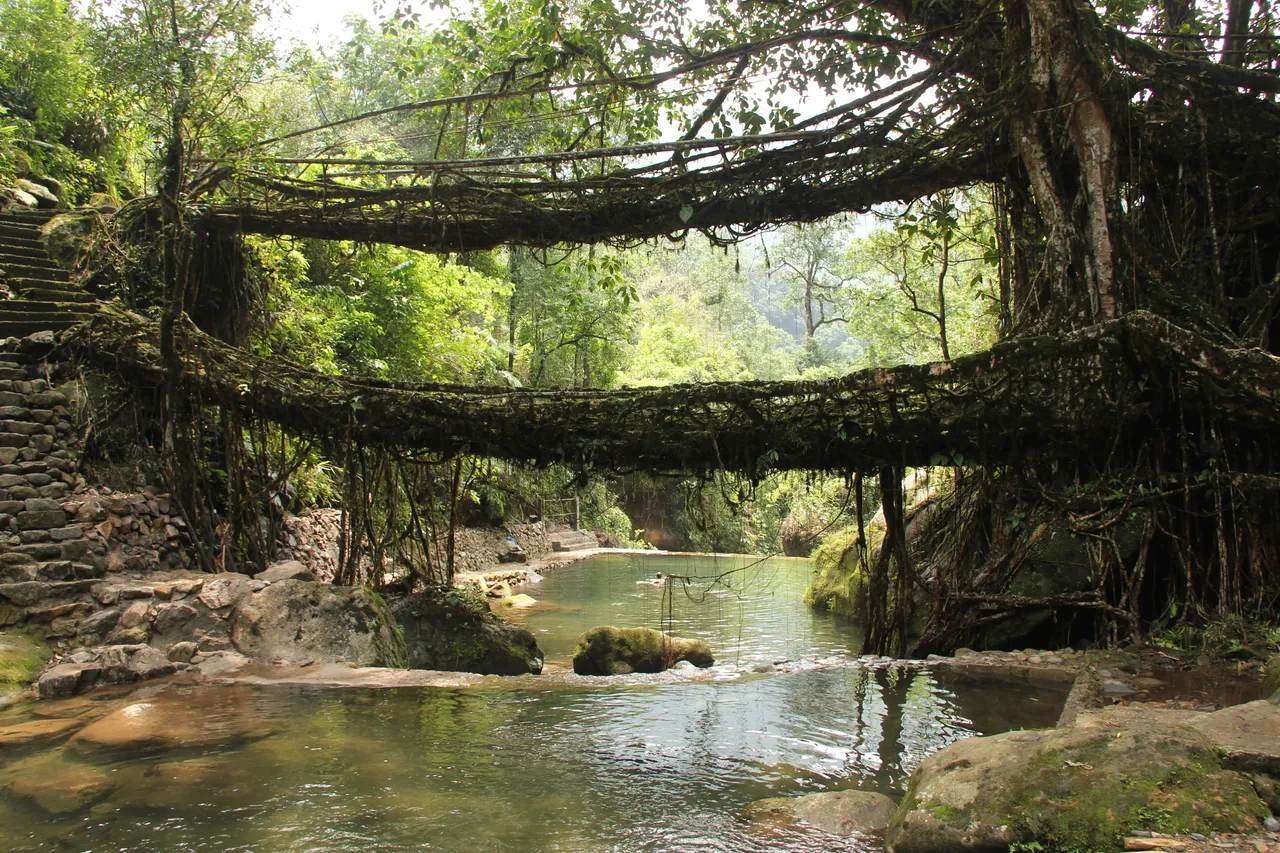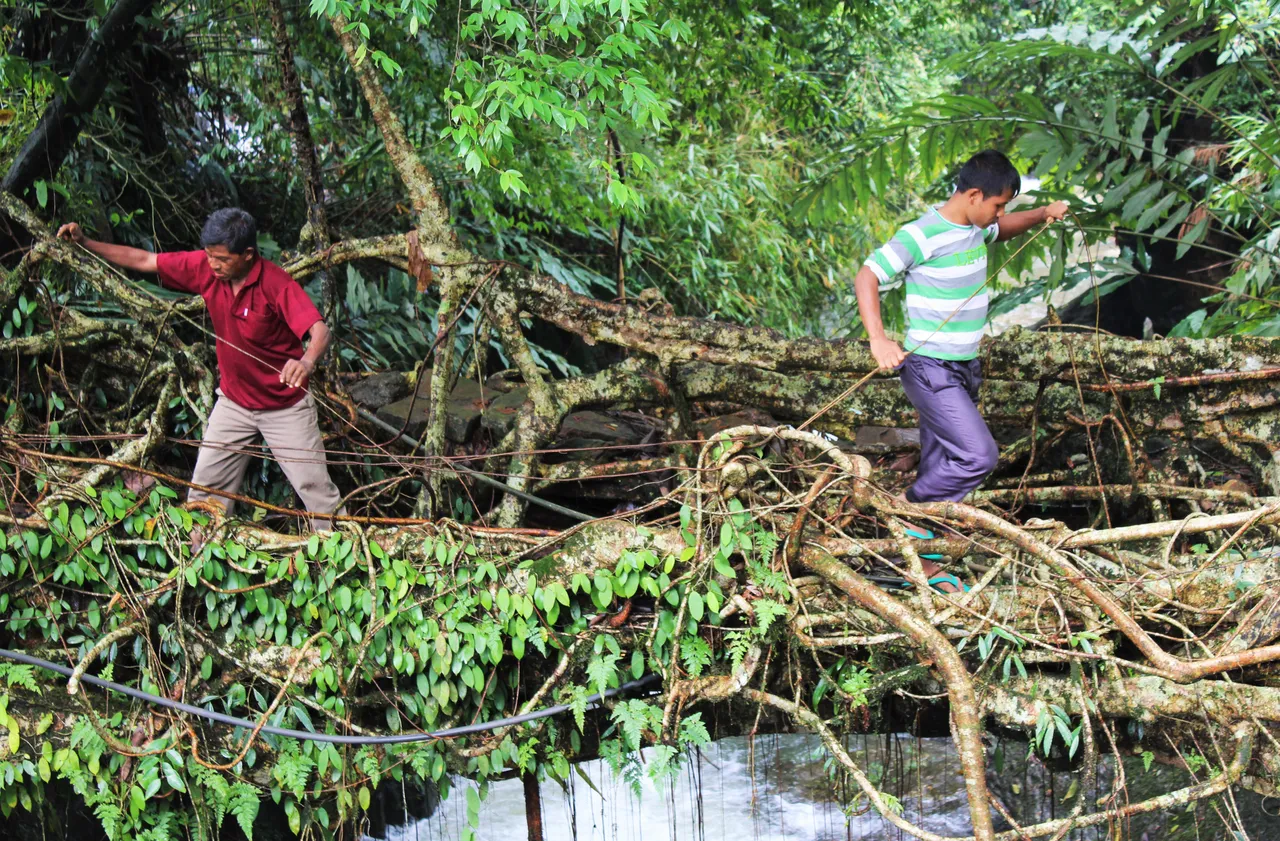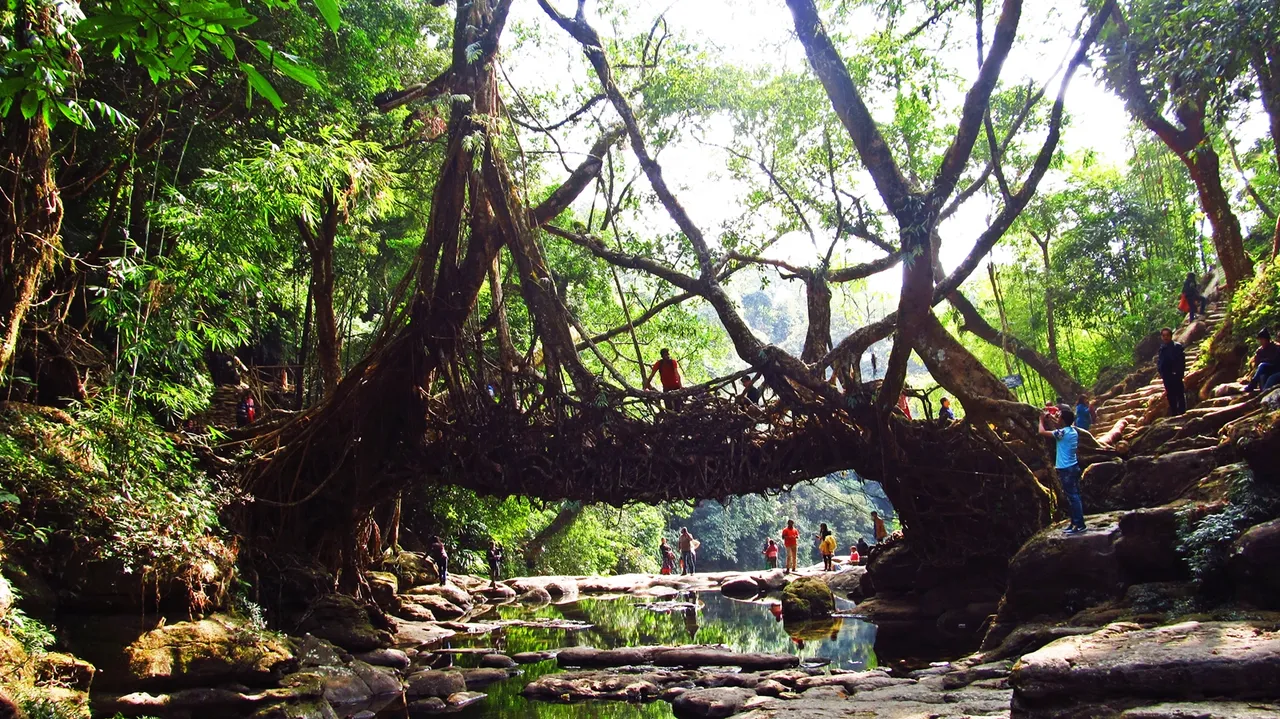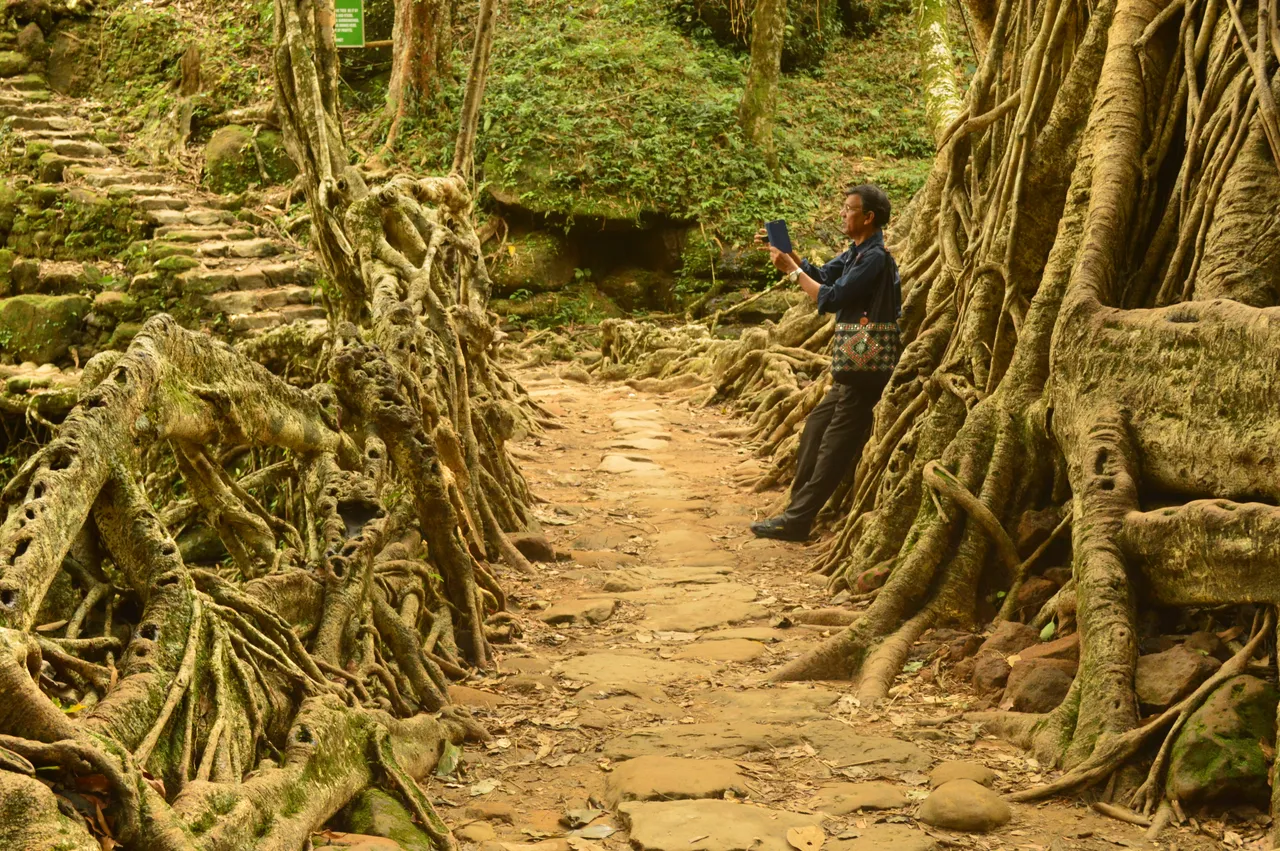Hello, and welcome back to another episode on the series "Incredible India". Last time we talked about an ancient marvel the Kailasa Temple. If you have never heard of it, then I recommend checking out that post to know more about it.

Meghalaya's Living Root Bridges
You may have seen the finest bridges made by humans throughout the world. But have you seen nature's own bridges? A living root bridge is a kind of simple suspension bridge formed from the living roots of a species of Indian Rubber tree - Ficus elastica, that grows alongside the rivers flowing in the lower reaches of the southern slopes of Khasi and Jaintia hills of Meghalaya State in India.

Arshiya Urveeja Bose, CC BY 2.0, via Wikimedia Commons

Living Root Bridges: Location
They are generally found in the Jaintia and Khasi Hill districts of Meghalaya State in India. Most of the root bridges are concentrated in Cherrapunji and Shillong. Meghalaya State being one of the "seven sister states" of north-eastern India gets much fewer tourists than it should.
You can reach Shillong from Guwahati which acts as a major hub in this region:
By air: Shillong is 123 km from Guwahati airport and private reserved cabs are the most prefered by tourists.
By train: Due to the harsh terrain, the closest railway station is the Guwahati Railway Station which is 148 km from Cherrapunji and the most preferred way is to take private cabs/government buses.

How are living root bridges formed?

Elbowmacaroni, CC BY-SA 4.0, via Wikimedia Commons
A Living Root bridge is formed by guiding the roots of the Ficus elastica tree across a stream or river. The roots of Ficus elastica can attach themselves to the rocks and other roots easily and are not affected by erosion due to water. Rocks, wood or bamboo are used to fill the gaps in the base of the bridge to make them safe to travel. It can take many years for a young root to grow and be able to support the weight of a person.

Some of the interesting facts about living root bridges.
- The longest bridge is near the small Khasi town of Pynusria, well over 50 meters in length and is known as the Rangthylliang Root Bridge.

Longest root bridge by Anselmrogers, CC BY-SA 4.0, via Wikimedia Commons
- The double-decker root bridge in Cherrapunji, is only one of a kind in this world and is a great attraction in Northeast India.

Double-decker Root Bridge in Nongriat village by Kishlaysingh4, CC BY-SA 4.0, via Wikimedia Commons
The Meghalaya state is a part of the Meghalaya subtropical forest ecoregion, covering about 70% of the state's land area as forests and It receives the maximum rainfall in India. Mawsynram near Cherrapunji even holds the world record for getting the maximum amount of rainfall in a year.
People of Khansi and Jaintia tribe devotes 10 - 15 years guiding, pruning and giving the shape to form a single bridge.

Kiranjit, CC BY-SA 4.0, via Wikimedia Commons
- While some of the bridges are in poor conditions, most of them last for centuries. Some of the bridges are in use for 150 years. The life span of roots is 500-600 years.

Soham Sil, CC BY-SA 4.0, via Wikimedia Commons
- A well-formed root bridge can easily support 50 people at once.

Saheen Shehnaz Begum, CC BY-SA 4.0, via Wikimedia Commons
These mystical living root bridges are simply nature's marvel. They represent the symbiotic relationship between humans and nature in the purest form. Some of these bridges are not well connected to roads and you might have to trek for hours in challenging terrain with slippery rocks in dense forest trails to reach there. It is a dream location for a nature lover.
Make sure to avoid the months of June, July and August as Meghalaya experiences heavy rainfall during this monsoon season and the trek becomes so challenging and dangerous.
It's a shame that many people still don't know about these living bridges even living in the same country. North-eastern India has not received the attention that it should have.
Let me know what you think of these living bridges of Meghalaya. Until then, stay tuned for the next episode. Cheers!

Note
All the content is mine unless otherwise stated.
- Text dividers by cryptosharon and #Hive-assest posted in @theterminal's discord.

I am part of these awesome communities/servers on hive. Feel free to join.


Click on the banner to join

 Click on the banner to join
Click on the banner to join
